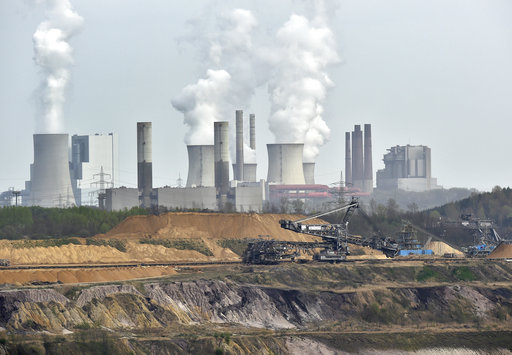Bonn, 17 June, 2019 (Meena Raman) – As students, youth and environmental activists around the world staged recent protests and continue to do so demanding for urgent and greater climate action on the part of governments in combatting climate change, Parties under the United Nations Framework Convention on Climate Change (UNFCCC), the Kyoto Protocol (KP) and the Paris Agreement (PA) will meet at the usual intersessional meeting which takes place from 17 – 27 June, 2019 in Bonn, Germany.
The two Subsidiary Bodies, the Subsidiary Body for Implementation (SBI) and the Subsidiary Body for Scientific and Technological Advice (SBSTA) will meet to consider and decide on various issues, including a few unfinished items dealing with the PA implementation as well as in doing further work on the decisions taken under the ‘Katowice Climate Package’ (which are the decisions adopted in Katowice, Poland last year on the rules for the implementation of the PA). The June session marks the 50th session of the Subsidiary Bodies.
In a ‘reflections note’ for Parties, the Chair of SBSTA, Paul Watkinson (from France), asked governments to consider that when the first session of SBSTA was convened in 1995, the weekly carbon dioxide (CO2) concentrations in the atmosphere were about 359 ppm and that the average daily concentration on 11 May 2019 was 415 ppm, “for the first time in human history.” The note also states that “global emissions continue to rise” and that “this leaves a significant gap in the effort needed to limit the temperature rise to 1.5°C.
To amplify the message, the SBSTA Chair stated that he would ask the UNFCCC secretariat “to put the Keeling Curve showing the evolution of global CO2 concentrations on the screen” when SBSTA convenes. (1)
While emissions continue to grow, the Doha Amendment to the Kyoto Protocol (KP) which gives effect to the second commitment period (2CP from 2013 to 2020) has yet to come into effect, and is not likely to do so anytime soon, given the lack of political will to do so, especially by major developed countries.
As of 8 May, only 128 Parties have ratified the Doha Amendment, while 144 are required for the it to enter into force. Some developed countries such as Canada, Japan, the United States (US) and Russia have indicated that they will not be Parties to the Amendment, contrary to what was agreed to in Doha in 2012, that then paved the way for the negotiations on the PA.
Parties had agreed in Doha, to amend the KP to ensure that developed countries who are Parties to the KP will undertake aggregate emission cuts that would be at least 18 per cent below 1990 levels under the 2CP. They also agreed that developed countries will revisit their emission reduction commitments by the end of 2014, with a view to increasing their ambition.
The lack of a 2CP essentially means that developed countries are off the hook again in revising and raising their pre-2020 emission cuts, and continue to delay the closing of the emissions gap by 2020 needed to limit temperature rise to well below 2°C/1.5°C.
Among some of the key issues to be discussed at the June talks are the following:
Article 6 of the PA
Article 6 of the PA generally deals with what is known as cooperative approaches among Parties, which includes the use of market and non-market mechanisms. Parties had agreed that rules for the implementation of the mechanisms would be adopted last year.
However, negotiations in this regard have proved difficult, contentious and complex, with Parties having different understandings on how the mechanisms are to be implemented. Hence, the rules, modalities and procedures to be applied in the implementation of Article 6 was not part of the package of decisions adopted in Katowice last year, and remains an unfinished agenda item that will be a major focus of the talks in Bonn, with the expectation that the rules will be finalised for adoption at the 25th session of the Conference of Parties to the UNFCCC (COP 25) in Santiago, Chile, in December this year.
Under Article 6(1), it was agreed that Parties can “choose to pursue voluntary cooperation in the implementation of their nationally determined contributions (NDCs) to allow for higher ambition in their mitigation and adaptation actions and to promote sustainable development and environmental integrity.”
Article 6(2) of the PA, allows Parties to engage “on a voluntary basis in cooperative approaches that involve the use of internationally transferred mitigation outcomes (ITMOs)” towards their NDCs, that promote sustainable development, ensure environmental integrity, transparency and avoid double counting.
The reference to ITMOs has allowed the opening of the door for the establishment of an international carbon market, despite years of lack of consensus on this among Parties in the negotiations under the COP since 2010.
The EU has been a major proponent of this, along with Japan and other members of the Umbrella Group, while countries such as Bolivia and Venezuela, among others, have strongly resisted such mechanisms, primarily because they allow for offsets, i.e. where developed countries can transfer their mitigation actions to be undertaken by developing countries by paying for them, with the consequent emission reductions in developing countries being counted as the emission reductions of developed countries.
In the context of NDCs, where developing countries have an obligation to undertake their own emission reductions, the use of ITMOs have raised issues, including on whether there should be limits the quantity of
Under Article 6(4), another mechanism has been agreed to in order to “contribute to the mitigation of greenhouse gas emissions and support sustainable development.” Some Parties view this mechanism as an expansion of the Clean Development Mechanism under the KP. Brazil has been a major proponent of this ‘sustainable development mechanism.’
Article 6(8) of the PA deals with non-market approaches and states that “Parties recognize the importance of integrated, holistic and balanced non-market approaches being available to Parties to assist in the implementation of their NDCs… including through, inter alia, mitigation, adaptation, finance, technology transfer and capacity-building, as appropriate…”. Further, the SBSTA was mandated to undertake a work programme to consider how to enhance linkages and create synergy between inter alia, mitigation, adaptation, finance, technology transfer and capacity-building and how to facilitate the implementation and coordination of non-market approaches.
Some developing countries, led primarily by Bolivia, are major proponents of the non-market approaches, as a counter to the market-based approaches.
There will certainly be push to ensure a balanced outcome in relation to the mechanisms under Articles 6(2) and 6(4) as well as 6(8). A major challenge for developing countries is to arrive at cooperative approaches that are able to reflect the diversity of NDCs and account for future cooperative arrangements.
Negotiations on Article 6 is expected to start based on the draft decision texts which were developed in Katowice last year. There were two texts that were developed in Katowice – one was a text forwarded by SBSTA to the COP at the first week of negotiations and another which was developed by the Polish COP Presidency which was put forward on 14 December, 2018.
Parties in Bonn are expected to discuss how they will move forward given the two draft decision texts on the table. The SBSTA Chair in his reflections note hopes that the work in Bonn will deliver “a next version of the textual basis for negotiations, with a limited number of options…” that can provide “a solid foundation” for the delivery of decisions that operationalise Article 6 in Chile later this year.
NDCs – common time frames
In Katowice, it was agreed that Parties “shall apply common time frames to their NDCs to be implemented from 2031 onward.” The SBI was tasked to consider this matter at its present session in Bonn. This issue was the subject of intense negotiations in Katowice, with developed countries pushing for a common time frame for the NDCs of all Parties, while some developing countries were of the view that countries should have the flexibility of deciding whether to have a 5-year or a 10-year time frame.
Presently, in relation to the first NDCs, most countries have a 10-year time frame, while only two countries (the United States and Marshall Islands) have a five-year time frame. Hence, the talks in this regard can be expected to be contentious over what the time frame ought to be.
Enhanced Transparency Framework
Under Article 13(1) of the PA, Parties agreed to the establishment of an enhanced transparency framework (ETF) for action and support, with built-in flexibility which takes into account developing country Parties different capacities.
In Katowice, the modalities, procedures and guidelines (MPGs) for the ETF were adopted, which provide comprehensive requirements regarding the information that must be reported by Parties in relation to their NDC implementation and how this information would be considered.
It was also decided that Parties shall submit their first biennial transparency report (BTR) and national inventory report (NIR), in accordance with the MPGs, at the latest by 31 Dec 2024.
This replaces the current biennial reports (BRs) for developed countries and biennial update reports (BURs) for developing countries under the Convention. Parties had also agreed that the BTRs, the technical expert review and the facilitative multilateral consideration of progress are prepared and conducted in accordance with the MPGs and shall replace the BRs, BURs, the international assessment and review (for developed countries) and international consultation and analysis (for developing countries), following the submissions of the final BRs/BURs, which is 2022/2024 respectively.
The Conference of Parties meeting as the Parties to the PA (CMA) requested SBSTA to undertake further technical work on a number of issues in relation to how the information to be reported and reviewed should be organised and presented, and how programmes for the training of experts taking part in reviews should be elaborated. The task of the SBSTA is to produce the operational tools for Parties to be able to implement the agreed ETF, which comprises of common reporting tables and common tabular formats.
A key issue in developing these common reporting tables and formats would be on how the flexibility provided to developing countries that need it could be reflected in the different outlines.
Loss and damage
An important agenda item under the SBI and SBSTA relates to the development of the terms of reference (TOR) for the 2019 review of the Warsaw International Mechanism for Loss and Damage associated with climate change impacts (WIM).
The WIM was established at COP19 in 2013 in Warsaw, Poland, to address loss and damage associated with impacts of climate change, including extreme events and slow onset events. The implementation of the functions of the Loss and Damage Mechanism is guided by the Executive Committee (known as the Excom), that acts under the guidance of the COP.
In 2016 at COP 22, it was agreed that there be a process to periodically review the WIM, which will take place in Dec. 2019. The Subsidiary Bodies at the June talks are tasked to finalise the TOR for the review.
COP 22 also recommended the preparation of a technical paper on loss and damage finance as an input for the next review. The technical paper can be found at https://unfccc.int/sites/default/files/resource/tp2019_1_advance.pdf and reviews existing sources of financial support relevant for addressing loss and damage. This paper is relevant in enabling progress in fulfilling one of the functions of the WIM that relates to enhancing action and support, including finance, to address loss and damage which has thus far been inadequately addressed.
The issue of finance to address loss and damage is expected to be highly contentious between developed and developing countries.
Adaptation Fund
In Katowice, the CMA decided that the Adaptation Fund (AF) shall serve the PA effective 1 January 2019. The SBI is tasked to consider the membership of the AF Board, which will comprise of members from developed and developing countries who are Party to the PA.
1.5°C Special Report
At COP 24, world media coverage of the Katowice talks was mainly on how governments could not welcome the Intergovernmental Panel on Climate Change’s (IPCC) 1.5°C Special Report (SR), given objections raised by the US, Russia, Kuwait and Saudi Arabia. The US said explicitly that it could not endorse the findings of the report. In the decision adopted in the final hours, the COP only managed to “welcome the timely completion” of the SR.
The COP also requested SBSTA to consider the SR with a view to strengthening the scientific knowledge on the 1.5°C goal, including in the context of the preparation of the IPCC’s Sixth Assessment Report (AR6) and the implementation of the Convention and the PA.
Given how the SR was mired in controversy last year, how Parties consider this matter at this SBSTA session will be indeed interesting to watch.
Forum on Response Measures
The impacts of implementation of response measures is understood as the effects arising from the implementation of mitigation policies and actions taken by Parties under the Convention, the KP and the PA, and how these mitigation policies/actions could have impacts on countries, particularly developing countries, including cross-border impacts. COP 17 (in 2011) established a forum on the impact of the implementation of response measures.
Decisions were adopted in Katowice to relaunch the work of the forum on the impact of the implementation on response measures. The decisions identified four areas for the work programme viz. (a) economic diversification and transformation; (b) just transition of the workforce and the creation of decent work and quality jobs; (c) assessing and analysing the impacts of the implementation of response measures and; (d) facilitating the development of tools and methodologies to assess the impacts of the implementation of response measures.
The decisions also provided for the creation of the Katowice Committee of Experts on the Impacts of the Implementation of Response Measures (KCI) to support the work programme of the forum. The forum is expected to develop and recommend in June a six-year
Opposition from developed countries, especially from the US can be expected in operationalising the decisions adopted in Katowice in this regard.
UN Secretary-General’s Summit
At COP 24, Parties welcomed the UN Secretary-General’s initiative to convene a Climate Summit, to be held in September this year in New York.
A special briefing on the Summit along the side-lines of the climate talks will be held on the 21
A major concern of developing countries that is expected to be raised along the side-lines of the Bonn session is on whether the Summit will be mitigation-centric or if it will also focus attention on adaptation as well as on the means of implementation for developing countries.
Conclusion
The above are just some of the main issues that will occupy delegates at the Bonn session, before Parties meet once again in Santiago, Chile for the next session of the Subsidiary Bodies and COP 25 which will take place from 2-13 December, 2019.
- Third World Network




